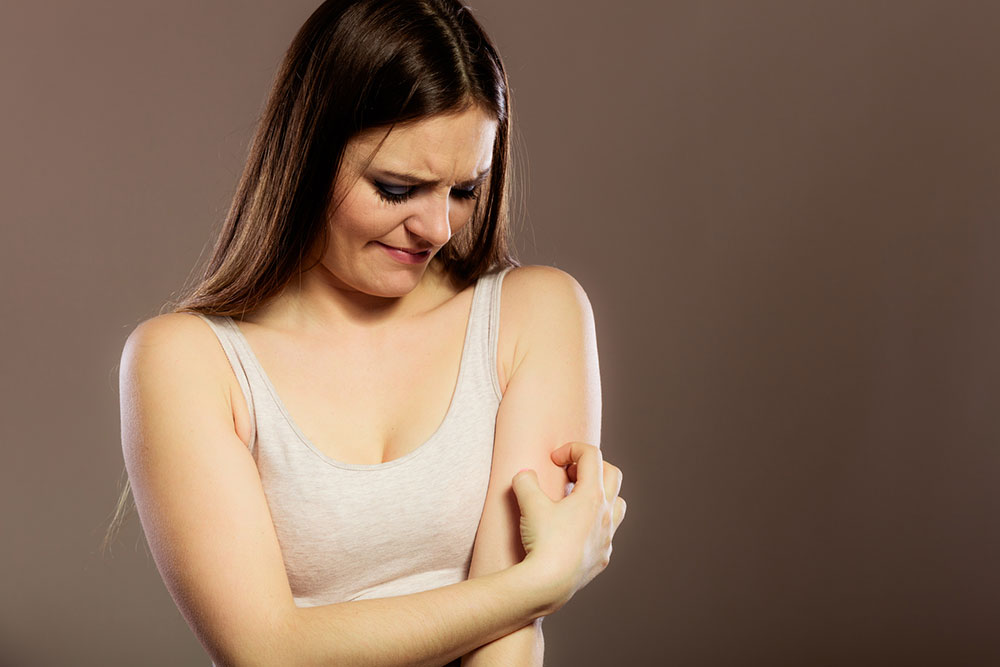8 conditions that cause blisters and warning signs to identify them

The human body is susceptible to various infections and, consequently, certain symptoms that interfere with daily life. One of these complications includes blisters and small pockets of fluid in the upper skin layers, which is the body’s response to injury. However, a blister may also develop because of various health conditions that are often mistaken for something else. Here are certain warning signs that could cause blister because of health complications:
- Herpes simplex
An individual may sometimes develop painful blisters on their genitals or the mouth. These might occur alone or in clusters, leak clear yellow fluid, and then crust over. This type of blister on the mouth is called a cold sore, while the ones on the genitals are called genital herpes, a sexually transmitted infection (STI). The oral and genital lesions are commonly caused by the viruses HSV-1 and HSV-2. The blisters might be triggered by stress, illness, sun exposure, and menstruation in people with the herpes simplex virus. The infected site usually starts to itch or tingle before the appearance of blisters. - Impetigo
The condition is a common bacterial infection in babies and children. It triggers an irritating rash and fluid-filled blisters that pop easily, forming a honey-colored crust. The clusters of blisters may expand to cover more of the skin. The symptom is usually located around the mouth, chin, and ear. One may find these to appear pink or red on light skin and dark red, purple, brown, or gray on darker skin. The sores could be itchy and occasionally painful. One should also know that the discolored marks formed after the crust phase eventually fade without leaving scars. - Contact dermatitis
Some individuals may notice their skin turning itchy, red, scaly, or raw and form blisters that weep, ooze, or become crusty. This might result from contact dermatitis, which is triggered hours to days after an area of skin comes into contact with an allergen or irritant. While the condition isn’t severe, its signs, like blisters, could make one uncomfortable. While the condition and its symptoms usually disappear, one could reduce its impact by following certain home remedies. A few include avoiding scratching the affected region, cleaning the skin with milk soap and lukewarm water, and stopping using products one thinks cause contact dermatitis. - Canker sores
Also known as aphthous stomatitis, a canker sore is a common condition that may lead to blisters. Injury, stress, infection, and other diseases usually trigger health complications. The ulcers (blisters) form small, oval-shaped bumps inside the mouth, which may cause a tingling or burning sensation. The pain from the blisters may worsen when drinking, speaking, or eating. Minor canker sores usually heal independently without any scarring around 1 to 2 weeks after they first appear. However, major canker sores may take up to 4 weeks to heal and could result in scarring. - Shingles
Shingles are caused by the varicella-zoster virus, which is also responsible for chickenpox. The condition is a painful rash of fluid-filled blisters, typically appearing in a linear stripe pattern on one side of the body. Chills, headaches, fatigue, or a low fever might accompany this sign. One could identify the condition early if pink or red blotchy patches appear on one side of the body along nerve pathways. Moreover, the blistering rash might itch, hurt, or burn, and it may also erupt and ooze. Some people may also notice the blisters turn slightly yellow and begin to flatten. The signs usually last three to five weeks, and most people recover fully. - Chickenpox
Some individuals may develop blisters out of the ordinary. These are usually itchy, red, fluid-filled blisters that occur in various stages all over the body. This is a common indicator of blisters caused by chickenpox and requires a doctor’s intervention. Other signs like body aches, sore throats, fever, and loss of appetite might accompany the rash. One should note that chickenpox remains contagious until all blisters have crusted over. Experts may indicate prescriptions or topical ointments to relieve itching. A few home remedies to manage such blisters include taking lukewarm baths, applying unscented lotion, and wearing lightweight, soft clothing. - Dyshidrotic eczema
Blisters may often develop in people who experience dyshidrotic eczema. The condition may cause itchy blisters, usually on the hands or feet. While the cause of the complication is yet to be discovered, experts believe allergies trigger dyshidrotic eczema. Other associated symptoms include red, dry, scaly skin, and deep cracks. Apart from prescriptions, a healthcare provider may recommend home remedies such as using a moisturizer or barrier repair cream to dampen skin after a soak or bath, keeping the nails short to prevent scratching, which could lead to an infection, and taking note of any soaps, jewelry, and other products that might seem to worsen the symptoms and avoiding them. - Pemphigoid
The rare autoimmune disorder may result in certain symptoms, including a skin rash and blisters on various body parts. A red rash is usually the first sign of pemphigoid, followed by thick and large blisters forming later. These may contain clear fluid or blood and may hurt if they burst. While the cure for this condition is yet to be determined, a healthcare expert may recommend treatment options to relieve symptoms.